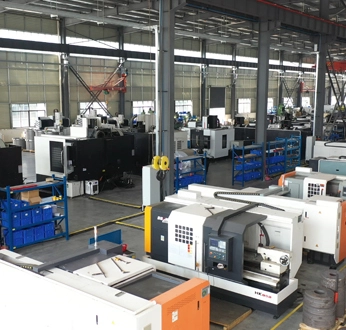
Common as grinding equipment in industrial production, both vertical and horizontal bead mills use agitating elements for material processing and treatment. However, there are obvious differences between the two in appearance and working principle.
Working Principle of Vertical Bead Mill
The agitator shaft of the vertical bead mill is perpendicular to the horizontal and is not easily blocked by grinding material.
Covering a small area, it is more suitable for production and manufacturing lines in small spaces. If the grinding chamber is too large, the height of the vertical bead mill will be too high, which is not conducive to operation and placement. As a result, the maximum capacity of the grinding chamber that a vertical bead mill can achieve is usually smaller than that of a horizontal bead mill.
For the vertical bead milling machine, the grinding material gathers downward due to gravity and the rotation of the rotor provides upward centrifugal force thereby carrying out the full grinding, which is more thorough without dead angles. Thus, smaller particle sizes and narrower particle distribution can be obtained. The grinding media zirconium beads settle at the bottom of the separation wheel under gravity when the machine is stopped in case of the beads leakage during startup. Since the particle size discharged is narrow, the vertical bead mill adopts a centrifugal separation method. In addition, the vertical bead mill is more convenient to operate.
Working Principle of Horizontal Bead Mill
The agitator shaft of the horizontal bead mill is horizontal. It is widely applied, and more suitable for high-precision processing. The horizontal bead mill covers more than the vertical one in grinding material handling.
According to the output particle size scale, there are two types of LONGLY horizontal bead mill, micron, and nanometer, with various separation methods such as static screen, dynamic screen, and centrifugal separation. The separation can be flexibly selected appropriate to the customers' requirements of the desired discharge particle size and the properties of the grinding material. And there will be more abundant in rotor structure, the pin type, turbo type, eccentric disc, combined, and so on.
Apart from the different working principles, there are some other differences. The structure of the vertical bead mill is simpler, easy to maintain, and easier to locate, unlike the horizontal bead mill which requires higher and accurate support to the whole equipment. During the grinding, the vertical bead mill makes it easy to control the grinding depth and angle because of the vertical direction. Instead, the horizontal bead mill requires more skillful operation and experience.
Differences In The Positions Of Inlet and Outlet
The feed inlet of the vertical bead mill is usually below the grinding chamber, and the discharge outlet is at the upper of the grinding chamber. The refined particles meeting the grinding result get screened out overcoming gravity under the centrifugal force.
With the non-screen separation, there is less blockage reducing maintenance costs. The double-check valves can be selected for different materials to prevent the backflow of grinding media.
In general, the selection of types of bead mills should be subject to the processing tasks, the production scale, and the area covered. Only after knowing the characteristics and working principles of the bead mill can you choose the suitable bead mill to complete the grinding tasks more efficiently with higher production efficiency.
